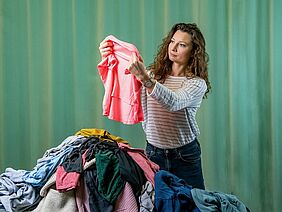Governments in consumer countries face a significant challenge within the context of complex globalised supply chains; satisfying the public’s growing demand for sustainable products while respecting government sovereignty in producer countries. Legislation alone has proven ineffective in many sectors. A mix of governmental measures and private initiatives try to ensure the commodities and products which claim sustainable supply chains meet consumers expectations. To be effective, this mixture of approaches must be deliberately coordinated and interactive, creating a Smart Mix.
"Smart Mix" defined
A Smart Mix is a mix of measures that includes at least one binding public measure; accompanied by at least one voluntary cooperative measure that gives guidance to the actions that should be undertaken to achieve stated objectives; and at least one voluntary private measure that must have consequences outside the jurisdiction of the intervening government. The mix of measures must interact and thus improve the achievement of the objectives of at least one of the measures.
Cross-sector supply chain analysis
Real-world examples of Smart Mixes in five sectors were analysed: conflict minerals, timber, palm oil, single-use plastics, and finances, to identify successes, barriers, and how they were overcome. The goal: take lessons from the five sectors to improve environmental and social standards of the German textile sector.
Lessons learned: German textile sector
Although numerous public and private measures exist in the textile sector, most were developed independently and showed little or no interaction with other measures – no Smart Mix. Lessons from the different sectors helped create governance scenarios. A maximal government intervention involvement scenario holds promise; featuring new regulations, requiring mandatory due diligence with a state-based oversight body and sanctions for non-compliance, similar to the timber sector. There is no cross-sectoral blueprint for a Smart Mix, as the challenges, elements and specifics of each supply chain are too different. The Smart Mix approach is certainly not the "silver bullet" for sustainable supply chains, FiBL researcher Mareike concludes, "a Smart Mix within the supply chain of a sector doesn’t imply sustainability throughout the entire supply chain … but it helps."
Further information
Contact
Links
- fibl.org: Activity report
- fibl.org: Project SMART-Mix+PI




